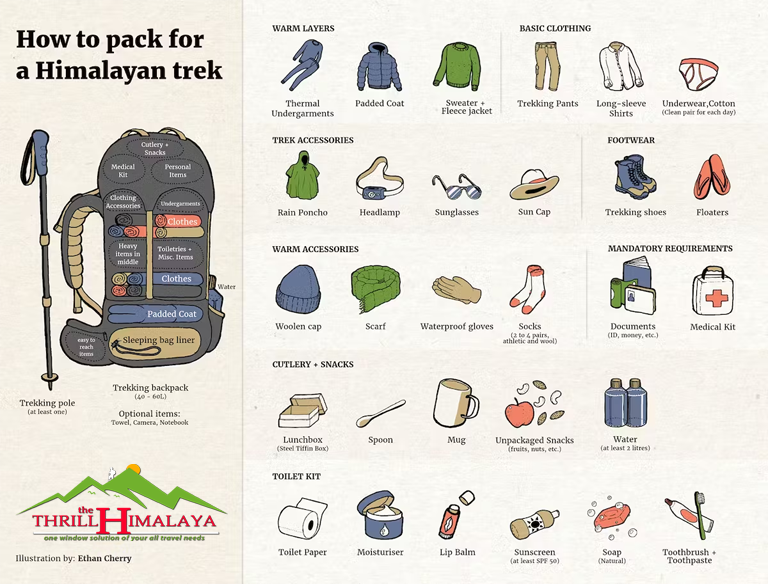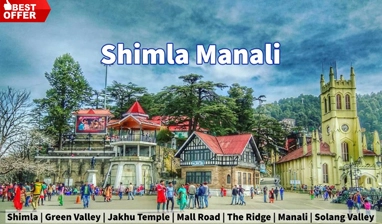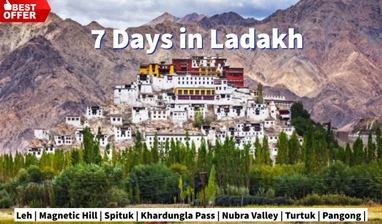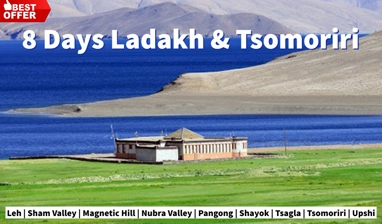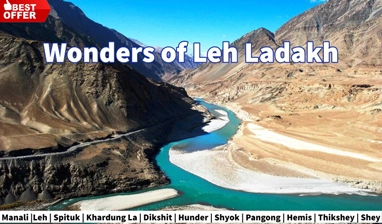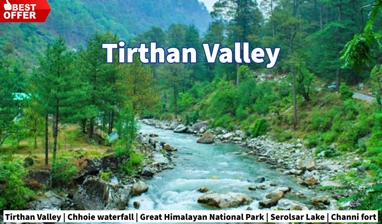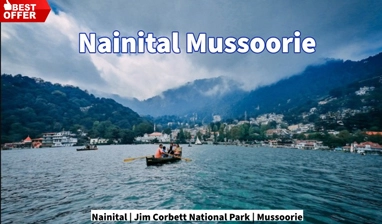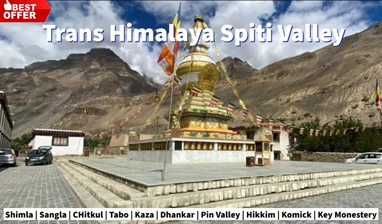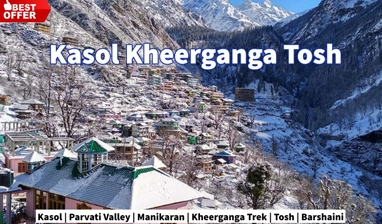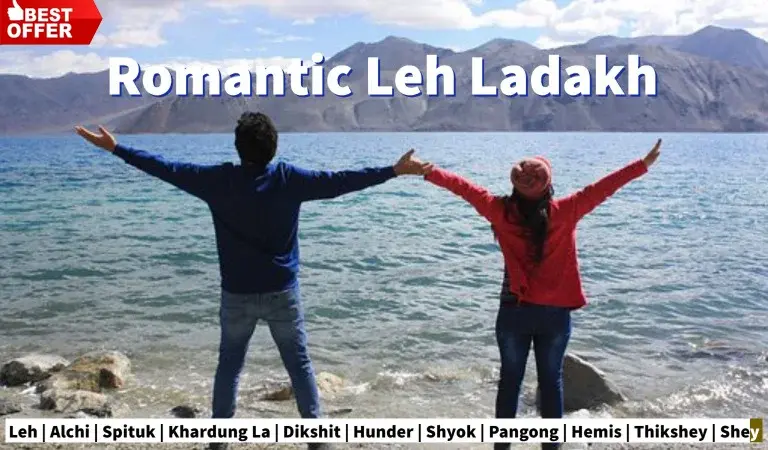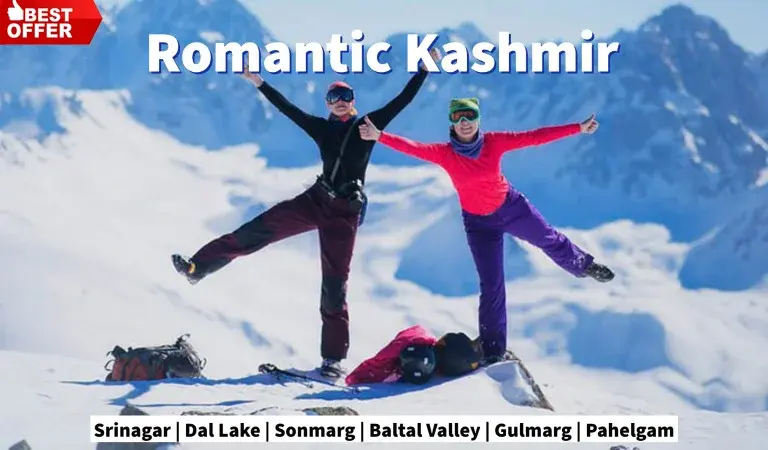
Chadar Frozen River Trek from Leh - 8 Days
About Chadar Frozen River Trek: The Chadar Frozen River Trek, located in the northernmost part of India in the region of Ladakh, is one of the worlds most iconic and challenging treks. The trek takes adventurers on an extraordinary journey along the frozen Zanskar River offering a unique opportunity to explore the starkly beautiful and remote landscapes of Ladakh, complete with breathtaking ice formations and an incredible cultural experience. The Chadar Trek takes place in the Zanskar region of Ladakh, India. The trek begins near the village of Chilling and extends through the frozen Zanskar River. The Chadar Frozen Trek occurs during the coldest months of the year, typically from January to February when the Zanskar River freezes over. This is the only time when its possible to undertake this unique adventure. Winter temperatures in the Zanskar region can plummet well below freezing, often reaching as low as -30°C (-22°F) during the night. For those seeking a rare and challenging experience in the Himalayas, Chadar Trek is the ultimate choice.
Trek at a Glance
Duration : 7 Nights & 8 Days
Grade : Difficult
Physical Level : Expart
Season : Mid November to February
Locations : Leh.
Highest Altitude : 11,100 ft
![]()
Day – 1 Report at Leh. Stay overnight.
The only way to get to Leh in the winter months is by flight. All flights land in Leh in the morning before noon. As your aircraft enters the Ladakh region, look below to see the undulating mountain ranges enveloped in a white blanket of snow. The temperature in Leh is always in the negative. Keep a jacket, woollen cap and gloves handy in the flight to face the blast of cold air the moment you land the plane. Leh is covered by a blanket of snow. It's white all around. Sometimes the roads have a coating of a thin sheet of ice. Watch out when you walk on them and be wary of slips and falls. The city of Leh is only partly open during the winter months. Only the shops catering to the local needs are open. Buy all your gear from your city and don’t keep any major shopping to do at Leh. Leh at 11,800ft is higher than your entire trek. It is colder too. Daytime the temperature hovers at around -10 degrees and after sundown drops to -16 or more. Get used to the cold at Leh during the day in the sun but get into your rooms once the sun goes down.
Day – 2 Drive to Chilling.
Chilling, the start of your walk on the frozen Zanskar river is 64 km away from Leh. Drive on the Leh Srinagar highway till Nimu where the Indus meets the Zanskar. At Nimu take the road heading left and drive along the Zanskar. The road goes up along the Zanksar. Spot the frozen sheets of ice or Chadar forming on the river already. An hour and half more along the Zanskar brings you to Chilling. A few army sheds and a couple of shut buildings dot the almost shut hamlet of Chilling. The road goes a few km beyond Chilling. Drive ahead until you can see the end of the road. This is where you leave the road and hit the Chadar. Take your first few steps on Chadar carefully getting a feel of the surface you are stepping on. The Chadar surface can be of various kinds – a coating of fresh powder snow, hard and shiny ice, a freshly formed chadar (sheet of ice), chadar that's weak and breaking or another new texture. It is easy to walk on a fresh coating of snow. The snow gives you a good grip and you can walk normally. An old hard and shiny surface of ice is what is tricky initially. Do a penguin kind of walk on such a surface without lifting your feet too much off the ground. The Tilat Sumdo campsite comes within an hour of your trek. Sumdo means confluence. A local tributary joins the Zanskar from your left. An elevated level field makes a good camping spot. On the opposite side are a few caves where those not carrying tents can camp. The locals on their journey through the Chadar tend to stay in caves. Tilat Sumdo will be your first experience of camping out in freezing temperatures. A campfire will make it better but it comes at the cost of the last traces of vegetation (dried) left on the banks of the Chadar.
Day – 3 Trek from Tilat Sumdo to Shingra Koma. (9.5 km, 6 hours)
Wake up with the sun at about 7 am and prepare to leave the campsite by 9 am. Though the sun is up, Tilat Sumdo like most parts of the Chadar gets direct sunlight only during midday. Another reason why the Chadar forms and remains. The morning walk on the Chadar may feel like a walk inside a deep freezer. Your face should be the only exposed skin but it's enough to give the deep freeze feeling. As you walk on the Chadar, listen to the sounds it makes. Depending on the thickness of the Chadar, the sounds change. You will soon start recognizing where the Chadar is thick and where it is thin and dangerous. There can be certain sections where the Chadar has formed only on the real corners of the river and the corner is under a low overhang. Do not fear to get down to your fours or even lie down on your tummy and crawl through those sections. Shingra Koma is almost 10 km away from Tilat Sumdo. The 10 km can be covered in about 6 to 7 hours. Midway through the trek around noon, find a sunny section where your cook can dish out a quick hot meal of Maggie and tea. Packed lunches are ruled out on the Chadar trek because the food will become way too cold by noon to be eaten. Hot quick meals on the way are the only way out. While on the Chadar, do not be surprised to spot pug marks. The big cats roam around pretty freely though they are elusive to the human eyes. Shingra Koma is a big camping ground on your right as you walk upstream. It's right below a huge stone wall which is straight out of a Hollywood movie. The Zanskar river takes a beautiful turn right in front of the campsite and sharp peaks rise on the other side of the river. Shingra Koma gets its name due to the abundance of a plant called Shingra.
Day – 4 Trek from Shingra Koma to Tibb. (15 km, 7 – 8 hours)
The trek from Shingra Koma to Tibb is a long one. It is also one of the most beautiful days of the trek. Watch the small waterfalls on the left standing still in the form of icefalls. A couple of hours into the day's walk brings you to a massive waterfall on the left. Prayer flags flutter on the trees in front of the waterfall. You know that the place is revered by the Ladakhis. Surprisingly the waterfall is not frozen. Notice the greenish moss growing on the rocks under the water. The legend goes that, one-year Nerak ran dry and a holy man went to Kailash to pray for water. He came back with a pot full of water and 2 fish. The condition was that he does not place the pot anywhere. On the journey back, it so happened that he placed the pot and this spot and two fishes jumped off creating this massive waterfall. The rocks behind seem to have two nostrils. One which is full of water and the other dry. According to legend, this waterfalls has its source at Kailash in Tibet. The lunch point for the day is exactly the midway and under an overhang of rocks. Post lunch, the Zanskar river passes through narrow gorges where the width of the river can be covered by 4 people holding hands. The narrow gorge hardly gets any sunlight and so the river is non-existent. Generally, a thick chadar forms end to end here. Two more hours of walk through the various hues and forms of Chadar brings you to a large camping area on your right – Tibb. To the left again are caves where 8 to 9 people can be comfortably accommodated. The Tibb campsite also has more dry vegetation around.
Day – 5 Trek from Tibb to Nerak. (12 km, 7 hours)
A kilometre ahead around a bend under the shade of the gorge lies the famous Nerak waterfall. The Nerak pul or bridge lies just ahead of the waterfall. The bridge is an old wooden bridge but can still take a wait of 4-5 people at once. It's a nice experience walking on the rickety bridge and catching the sight of the waterfall from the top. The trail goes along the Chadar and 20 minutes of walk brings you to Nerak where a small trail takes you up to the Nerak campsite. Nerak is a village located about 2,000ft higher than the river bed. The Chadar trekkers camp not at the village but the camping ground 200 ft higher than the river. There is a lone shelter at Nerak campsite which serves as a Rafting point in the summer months. During winters, it serves as a shelter for the Chadar trekkers. Nerak is notorious for its really cold nights and winds. The temperature can dip as low as -25 or lower. This is going to be the coldest point of your trek.
Day – 6, 7 & 8 The return from Nerak
The return path is theoretically a retrace of the route you took the last 3 days but in reality, can feel like a new one. The dynamics of the Chadar can make the whole place look and feel different. Old Chadar breaks, new ones form where there was none earlier, the texture of the Chadar changes and so on. Sometimes the Chadar breaks right under your feet and floats away like a raft. You have no option but to run on to the safer sheet ahead. You see the same broken raft getting stuck somewhere downstream and other icicles clinging onto it to form a whole new Chadar elsewhere. The Chadar trek is an experience. Your experience and what you see will be different from anyone else.
For Package Details, Please Call us at: (+91) 78310-50555, (+91) 98163-50555
Important Places to Visit In This Tour
I'am Interested! Please tell me the Best Offer!!
Package Includes
- All trekking arrangements including sleeping tents on twin sharing (Alpine shape), sleeping mattresses, sleeping bags, toilet tents, dinning tent (in case of a large group), kitchen tent, English speaking mountain guide, cook, kitchen helpers, camp boys, Mules for luggage.
Package Excludes
- Any bus, air or train fare before and after the tour.
- Any Hotel accommodation before and after the trek.
- Insurance of any kind (personal, medical, accidental etc.
- Items of personal nature such as beverages, laundry, phone bill, tips etc.
- Emergency evacuation charges (if any).
- Portage at railway stations and hotels.
- Anything that is not mentioned under the “quote includes” head
- GST 5% Extra
